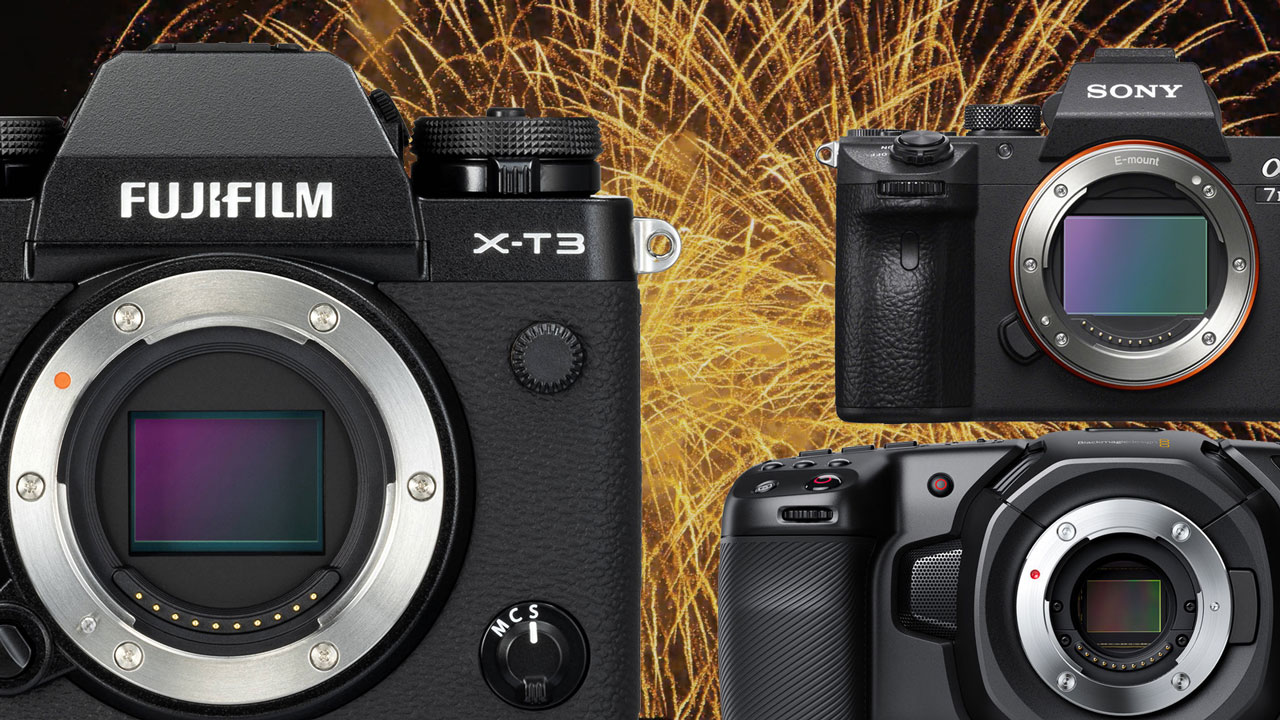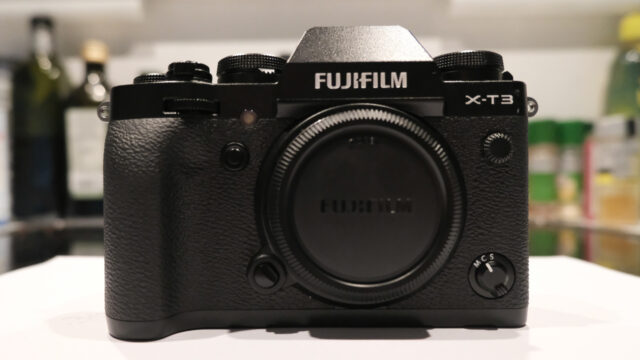
Edit: Adding the Panasonic GH5s to our list. Simply left it out by mistake as I was already testing it during 2017….
Here at cinema5D we feel lucky enough to test, review and share our unbiased honest professional opinion with our filmmaking community. The reward is the trust we get from our audience. This leads me to our “Best Mirrorless Camera for 2018” list. EVERY camera in this list was tested by us inside-out and in regards to the winner, we welcome you to comment below. Rest assured that 2019 will be EVEN MORE exciting, but for now, let’s say goodbye to 2018….
2018 is slowly but surely fading out and I hope you will agree that this year was one of the best for the aspiring (independent) filmmaker when it comes to the choice of production equipment and especially high quality mirrorless cameras. During this year, almost every major camera manufacturer released shiny new toys, but for the sake of this article, we will only concentrate on large sensor mirrorless cameras ranging from micro 4/3 inch to full frame sensor sizes. We are also fully aware that at times we will be comparing “apples to oranges” as some of our final candidates were simply designed to win the hearts of different users, yet as independent (and at times “on the budget”) filmmakers we at cinema5D tend to believe that one will be investing his/her hard earned cash on only a single camera that might serve him/her best.
Full Frame Category Winner – Sony a7 III
It’s funny to think how February 2018 looks so far away, but that was the time when I first saw the camera and had a chance to play with it a bit. Already then it was clear that Sony had created something unique when it comes to sensor size, performance and price point. My assumption was reassured after reviewing the camera a month later. The new Sony a7 III turned out to be a camera that redefines the word “basic model” (This is how Sony referred to it), and if this is what Sony puts in a basic camera (features and quality/performance wise), then there is certainly something to look for during 2019. (cough cough, Sony a7S III)…
Here is how I concluded my opinion about the camera after reviewing it:
Sony a7 III Conclusion:
The key element for me is the right balance between its price and specifications. Sony did a really good job in packing a lot of technology into a well-priced full frame mirrorless camera body. In my opinion, this is a great all-round shooting device with a good level of video performance and a nice stills functionality (at least this is what I heard from colleagues who have tried the camera and are shooting photos professionally). Our desires for 4K higher frame rates like 50/60p, higher bit rate, colour depth and maybe even a built-in ND filter will have to wait for the next round of announcements.
Full Frame Running Candidate – Canon EOS R:
I recently reviewed the new Canon mirrorless camera and while technically it is being regarded as a full frame camera, when it comes to shooting video, the image is heavily cropped but for the sake of order let’s leave it here, in the full frame category…. All in all it performed well but I’d be curious to see what Canon has under its sleeve for 2019. The people from Canon we talked to emphasized the fact that this is a “first generation” mirrorless camera so hopefully, some of its shortcomings can be fixed on the next model to come.
Missing from our list – Nikon Z6 and Z7:
We simply haven’t had a chance to test those cameras yet but as good as they might be for shooting video, when looking at recent mirrorless cameras sales figures coming out of Japan and the declining shares of Nikon, I have to have my doubts if any of those new cameras will really be a turnaround for Nikon in the ever-evolving mirrorless video shooting market.
APS-C Category Winner – FUJIFILM X-T3
FUJIFILM was very busy bringing nice well-budgeted filming tools for the independent filmmaker during 2018. In February they introduced the X-H1 which combined high-quality video performance and in-body stabilization system. Later in September, the X-T3 was released. While the X-H1 is a good camera, the X-T3 has managed to become one of my favorite working tools for the following reasons: Ease of handling, picture quality and autofocus performance (just to name a few). In general, this camera feels like a “Swiss Army Knife” when it comes to flexibility and choice of resolution/frame rates and such. Last but not least: the price. This camera gives competitors a run for the money when it comes to video and photo performance. FUJIFILM really managed to create and deliver an affordable high-quality working tool. What is really missing in order to make this little camera even more capable is an internal body stabilization system but even without it, with the right choice of lenses, (Especially for run&gun situations), this camera really shines!
Here is how I concluded my opinion about the camera after reviewing it:
FUJIFILM X-T3 Conclusion
It is no secret that FUJIFILM is heavily invested in making affordable cinema lenses for E (Sony) and X (FUJIFILM) mounts (MK and MKX series of lenses). In my opinion, this is guaranteeing us that FUJIFILM will not stop here. Furthermore, by introducing the first ever APS-C sensor size camera that can shoot 10-Bit video internally, FUJIFILM is positioning itself at the forefront and becoming a serious candidate to consider when thinking of shooting video on a mirrorless camera. It is one of those companies that have no higher video market share to protect and as such, they are free to move forward as fast as their R&D capabilities and budget allows. This particular camera should get some love and attention from the filmmaking community. For users who are heavily invested in lenses from other brands, I can only hope that some sort of a program can be established by FUJIFILM or alternatively, some other solution can be found in order to make people actually try it. We hear a lot about the love for a particular “colour science”. This camera can easily produce “analogue looking” images and furthermore, if you take photos with it, in my opinion, it is the one that looks the least digital.
APS- C Running Candidate – FUJIFILM X-H1
As I wrote above, this is a very nice camera with the advantage of having an internal body stabilisation system but other than that, it can not compete in terms of picture quality and autofocus performance with the newer X-T3.
Micro 4/3 Category Winner – Blackmagic Design Pocket Cinema Camera 4K
Announced during April this year, this much anticipated new Pocket Cinema Camera has already been shipping since October and with no doubt, it managed to capture the attention of many, mostly because of its capabilities in shooting RAW and ProRes in a small package, exceptionally nice images, and a very attractive price. When I mentioned “comparing apples to oranges”, I was referring to this camera. Some of its shortcomings like the absence of an in-body stabilization system and the absence of a continuous autofocus function are regarded by some as “not needed” as the word “Cinema” should already indicate to what target users Blackmagic design aimed when designing the camera. This might be true, but when looking at a saturated competitive market, I think it will be wise to look beyond the “Cinema” badge and evaluate the camera and what it can do opposed the other alternatives out there. I’m fully aware that the last sentence alone might cause some people to respond and question if the BMPCC 4K and the FUJIFILM X-T3 (for example) can be even compared. Again, as I see most of the people spending their money and buying ONE production tool, my clear answer is YES!
Here is how Nino concluded his opinion about the camera after reviewing it:
BMPCC 4K Conclusion
There are many more things to say about the Blackmagic Pocket Cinema Camera 4K, but please do watch the video if you haven’t seen it yet, as many things are covered there in more detail. Blackmagic really did their homework with this one and listened to as many customers as possible when designing the successor to their original Pocket Camera. The image out of it is beautiful and “cinematic”, the dynamic range is better than the one of similar cameras in the market right now, and it’s just very enjoyable shooting with it. It’s not a perfect camera of course, but it has a lot to offer.
Micro 4/3 Running Candidate – Panasonic GH5s
Amazing how time is flying. I tested the GH5s at the end of 2017 and published our review at the beginning of January 2018….All in all, it is a very solid camera with a much enhanced lowlight performance over the original GH5. The questionable autofocus system was greatly improved later this year when the latest firmware was introduced. Another thing that bothered some users was the absence of IBIS. As the GH5 has it, many were hoping to see this feature being implemented in this camera also but for different reasons that never happened.
Here is how I concluded my opinion about the camera after reviewing it:
In my opinion, the new Panasonic GH5S is a very capable camera and a more versatile shooting tool than the original GH5 – unless you are a photographer. The lacking IBIS is a let-down.
Best Mirrorless Camera for 2018 – FUJIFILM X-T3 is the Overall Winner!
All the mentioned cameras above are extremely capable filming devices so coming to a final conclusion was not an easy thing to do, BUT, when combining our actual shooting experience, general performance and price point, then the FUJIFILM X-T3 comes up as the best large sensor mirrorless camera for 2018.
On a personal note: Since its introduction, I’ve shot several projects with it around the world and was not let down even once. I LOVE its small size, I love having an EVF and I love its versatility. It allows me, as an independent freelance filmmaker, to fulfill (almost) any request coming from a producer/director, be it concerning a resolution/frame rate/color depth and such. Sure it is not perfect but for the cost it is doing a great job for what it is.
Last but not least: This article is all about different shooting tools. One should not forget that at the end of the day it is the storytelling that will win over an audience.
Happy shooting and a happy new year (almost!) from the cinema5D team
What is your favorite large sensor mirrorless camera for 2018? Please share with us your thoughts in the comment section below.

























